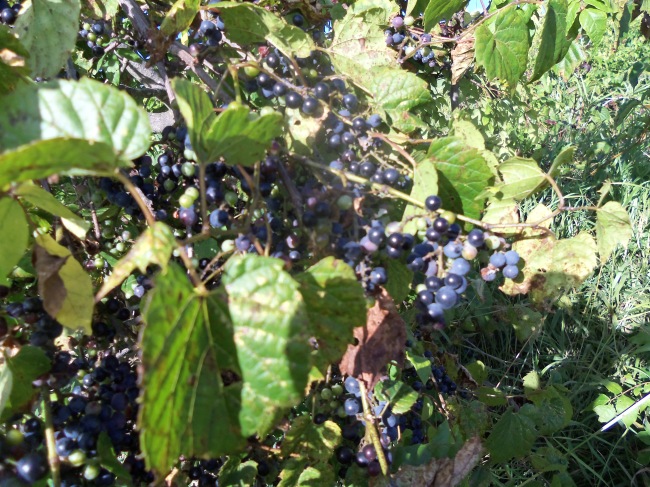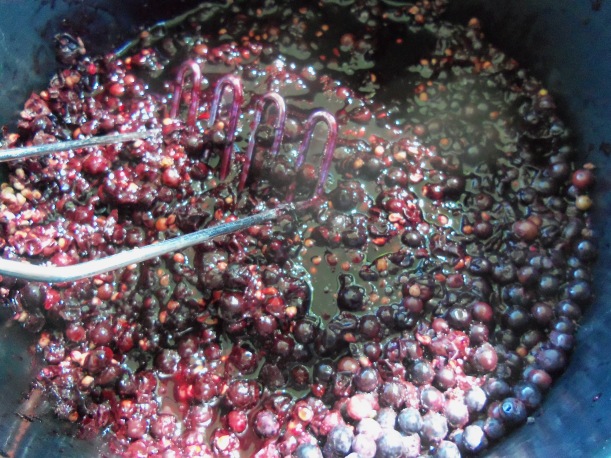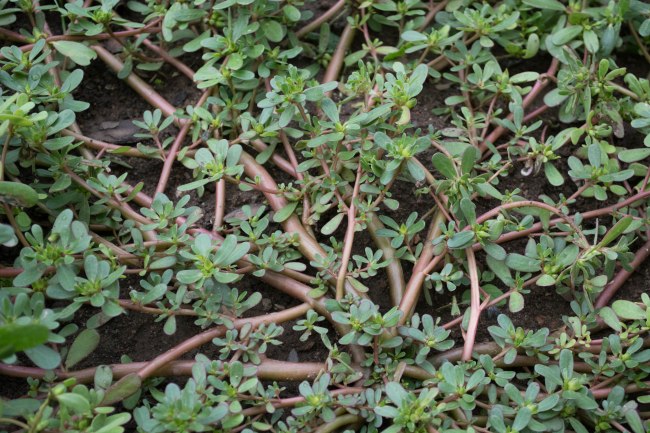The wild grapes are finally beginning to ripen in our area, so I am now able to work on some recipes which were the ‘raisin’ d’etre for this blog. The birds have already taken many, so I picked what I could should they disappear soon. I am not sure of the exact variety of the ones I picked. These ones, as you can see are very small, about the size of a blueberry. I hope to find some larger ones for other recipes, but these small ones are excellent for this one.
I started making grape ketchup a few years ago, as finding myself with a good supply of wild grapes, and not wanting to make either wine or jelly, I decided if there was not such a thing as grape ketchup, there should be. Sure enough, I was not the first to think of it, and there are plenty of recipes out there. However, most use cultivated grapes, which are larger and sweeter, but do not have the strong flavour or the nutrients of the wild variety. Also, I do not add water, which reduces the cooking time – good for me and the quality of the end product. Most any grape would work with this recipe, but I would recommend a fairly sour variety with a thick skin, which will add enough pectin to the mixture for it to thicken nicely.
It is good not only as a condiment but as a marinade for game and poultry, and I expect would go very well with lamb and pork too.
Apart from the picking, the ketchup is really very simple. Just wash the grapes and pick the berries off the stems, discarding any green ones. Place them in a pan, heat and simmer for about five minutes. Juice will begin to form at the bottom of the pan, but to help them along, use a potato masher to get as much juice out as possible.
Then, strain the mixture through a food mill or sieve, measure, and return the juice to the pan.
For every cup of puree:
1/2 cup brown sugar (or more to taste)
1/2 cup wine vinegar
1/2 tsp. pepper
1 tsp. allspice
Simmer the mixture until it is the right consistency, a little over an hour. I test it by cooling a small spoonful. I make it less dense than a commercial ketchup, but about as thick as a creamy yogourt. I do not process the jars – just freeze them.
This is a fairly tart ketchup as I prefer it, but it could stand probably up to double the amount of sugar. You can easily add more as it cooks and taste it.
I left a small amount in the bottom of a pan, and as a first use i deglazed it, added venison meatballs I had in the freezer and some quartered fresh plums. From that I deem the ketchup recipe a success.
One experiment often leads to another. Left with a pile of grape seeds, which are supposed to be highly nutritious and, I have noticed, are sold in granular form in health food stores, I decided to dry them and see what I could do. I rinsed and drained them, removing some of the skin that rose to the top, but certainly did not get it all. I then put the dripping seeds in the oven at 275 for about an hour, and as they were getting too hot and the water had mostly evaporated, I spread them out in the sun for another couple of hours. I don’t leave anything in the sun too long, for fear of botulism, but by that time they were sufficiently dry. I ground them in the coffee grinder – and then on to my next experiment.
I mixed a large spoonful in some hot water. It was a creamy pinkish colour but the seeds at the bottom were not very appetizing. Next experiment was to simmer the same amount in a small pot of hot water for about an hour and strain. The colour was browner, but the taste was equally good and no junk at the bottom. All in all, a pleasant surprise as experiments go, and for anyone who wants to get all the goodness out of the grapes, might be worth trying.















